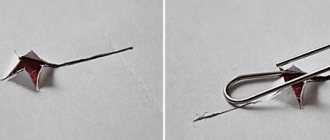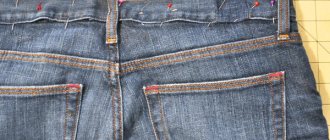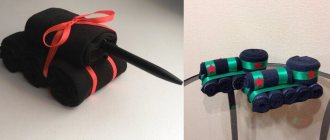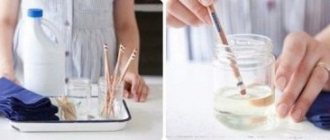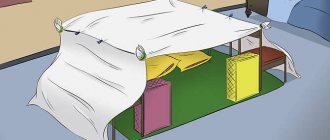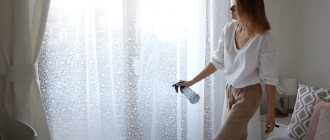A modular painting is considered a modern piece of furniture, although it first saw the light of day during Ancient Greece. The main feature of such paintings is the fact that they are divided into several parts, but at the same time they are not separate images, but fragments of one composition. Such products can be purchased in regular stores and through web resources, but to create a truly original interior, it is better to make modular paintings with your own hands.
Which paintings are suitable for different rooms
The living room is considered an excellent place for experimenting and combining different light and sunny colors. If there are no specific rules regarding the combination of shades, then the size of the painting should correspond to the size of the room. Oversized modular canvases will look bulky and awkward in a small living room, and small images will simply get lost in a large room.
A modular painting in the living room can be the central element of the room
When making a painting for the bedroom, it is important to remember that this is a place of rest and relaxation, so the image should not have sharp and aggressive lines and colors. For this room, a calm landscape or an abstract image is best suited. It is also very important to choose the shade of the product so that it is in harmony with the decoration of the bedroom, since a sharp resonance will draw too much attention to one detail of the interior.
Paintings in the bedroom should be in calm tones that promote relaxation and rest.
Bright colors are often used to decorate children's rooms, and their number can be very large for one room. Therefore, it is better not to do a modular painting in such colors. Also, a child is unlikely to appreciate abstraction; it is better to choose images of animals, fairy tale or cartoon characters. If a teenager lives in the room, then it is better to give him the choice, and find out in advance whether he even wants to see such a decoration in his room. You can offer several photos with friends (just print them so that one fragment contains parts of two or more photos); images with your favorite actor or musician are also suitable.
A modular painting in a children's room in the style of a child's favorite cartoon will be an excellent decorative solution.
Simple pictures are best suited for the hallway interior. This is due to the fact that residents and guests rarely stay in this room for a long time, so it is not worth spending significant physical and financial resources. But at the same time, it should be remembered that the hallway is the beginning of the home, so the modular picture must correspond to the general design style of the apartment or house.
Modular painting in the hallway
Before you make a modular painting with your own hands for the kitchen, you need to think about whether there is a place for it where the piece of furniture will not get dirty. If the wall area allows for the placement of canvas, then it is better to choose still lifes, since they are best suited for the given room.
Video: DIY modular painting (master class)
How to make modular paintings with your own hands
Before you start making a modular painting with your own hands, you need to decide on its appearance. To do this, it is worth considering the room where the finished product will hang. The drawing can be a realistic landscape, a pattern or a city view - it all depends on your imagination and preferences. It is not recommended to choose only portraits, because parts of the face do not look very aesthetically pleasing.
- 13 Signs Your Dog Is Aging
- Tattoo on the shoulder blade for girls
- What foods lower blood sugar
Some subjects can be printed so realistically that it feels like oil strokes on canvas. Although you don’t have to be a great designer or artist - you can simply download any image you like on the Internet, only it must have high resolution. Then visit the nearest print shop and transfer it to fabric, paper or canvas. In addition to the drawing itself, you will also need a base for the modules. It is made from:
- wooden frame structures;
- polystyrene foam;
- plywood;
- pieces of chipboard.
From photo wallpapers
To make modular paintings with your own hands, you need to properly prepare the image chosen to embody the idea. In various photo salons you may be offered a catalog with ready-made sketches. You can also submit your drawing there, which will be correctly divided into small parts in a graphics editor and printed on the material of your choice. Photo wallpaper can also be purchased at a hardware store.
The main thing is to initially think about the location of future modules in order to communicate your idea to a specialist. Next, use the following instructions:
- Start making the base. From wooden blocks with a cross-section of approximately 2x2 cm, build as many frames as the number of parts the product is designed from, or cut out canvases from foam plastic. The dimensions of any of the bases should be slightly smaller than the dimensions of the printed modules, because the design should also appear on the side.
- Cut out the images, but be sure to leave allowances for the folds on the wrong side.
- Place the cut out elements face down and place matching wooden frames or pieces of foam on top.
- Secure the photo wallpaper by folding the edges to the wrong side and fixing them with glue or a furniture stapler.
From fabric
Another material that is used in the process of creating modular paintings with your own hands is fabric. For this option, you can use any bright scraps that you find at home. The advantage of this method is that there is no need to try to match the edges of the modules. The work will go faster and easier. The manufacturing sequence is as follows:
- Decide on the number and size of modules; for fabric, it is better to make bases in the form of wooden frames.
- Cut the fabric into modules. Don't forget about allowances for subsequent bending.
- Place frames on the wrong side of the cut out pieces.
- Use pins or thin nails to temporarily secure the fabric.
- Turn the workpieces over and sequentially secure the allowances on the stretchers using a construction stapler. Start with the long sides, then move to the short ones, and finally fix the corners.
- Facelift without surgery after 50 years
- Coronavirus has discovered another hidden symptom
- Minimum old-age pension - conditions for assigning insurance and social insurance, calculation procedure
Required materials and tools
The main part can be made from a variety of materials. These could be images on paper that were printed in fragments on a regular home printer, paper with pictures from a printing house, wallpaper with a design you liked, fabric with a print, and so on. The material from which the frame will be made depends on the selected front part. A wooden frame is ideal for fabric, photo wallpaper is best glued to foam sheets, and paper attaches well to chipboards.
So, to make from wallpaper or other material you will need the following:
- Printed images.
- Thin wooden slats, polystyrene foam, chipboard and so on.
- PVA glue.
- Tape measure or meter.
- Construction stapler.
- Pencil, marker, chalk, soap.
- Scissors.
How to choose canvases for different rooms
Before you learn how to create modular canvases with your own hands, you need to figure out for which room a particular model of canvas is suitable.
Making a modular painting from fabric
You can design and print the main part for such a product yourself, order it from a designer, or purchase a ready-made product. The first option requires talent and inspiration, the second is suitable for those who are willing to spend a significant amount to purchase exclusive material, and the third for those who just want to freshen up the interior a little.
Do-it-yourself modular fabric paintings will be a wonderful home decoration
Step-by-step manufacturing instructions:
- The first step is to make wooden slats of suitable length. To do this, mark the workpiece and cut off the excess length.
- Then you need to saw off the ends of the wooden products at an angle of 45 degrees. In this case, it is better to first fold the frame on the floor to understand which way to cut.
- After this, glue the cut fragments with glue and press them, hold them there for a few seconds and leave them alone for 1-2 hours. You can also use a construction stapler to secure wooden elements.
Making your own painting from fabric
When all the frames are ready, you can start preparing the image. To do this, mark the canvas, leaving about 2 cm on each edge to leave some material for overlap. After this, simply stretch the fabric on the prepared frame and secure it on the back side with a stapler.
Video: master class on making a modular painting on canvas
Master class made of fabric
Materials:
- fabric with a plot or ornament, a printed image or wallpaper with a photo design;
- base: wooden slats 50x20 and plywood, fiberboard or polystyrene foam;
- PVA glue;
- scissors;
- pencil, chalk or soap;
- centimeter;
- stapler for furniture.
Step 1. Preparing the base
Depending on your budget, you can buy a ready-made canvas base or make one yourself. The first option is suitable for those who are inspired to paint a picture. For the first experiment, it is better to make a triptych - three elements, for which we prepare three bases. From slats and pieces of plywood you can quickly build a base for a modular picture. To do this, we connect wooden slats into a frame, cutting off the ends at an angle of 45 degrees. They can be stapled or glued.
For strength, we attach plywood triangles (with 10 cm legs) to the corners of the frame from the wrong side. As a lining, you can stretch a neutral-colored fabric over the frame, securing it with a stapler.
It is much easier to use pieces of fiberboard as a base; you just need to process the base along the edges. If you choose the option of wallpaper or a printed image, then you can choose a very simple and light base - polystyrene foam.
Step 2. Attach the canvas to the base
Before cutting out segments, plan well and mark the cut locations using the “measure twice and cut once” principle. The size of the fabric should take into account the folds on the reverse side. We fix the fabric on the stretcher with a furniture stapler, attaching the staples from the wrong side of the work. It is important to stretch the fabric evenly without forming folds. We fasten the long side first, and then the short one.
Printed versions can even be glued to thin foam ceiling tiles using PVA glue.
Many people, instead of wallpaper with a photo, order a print of the picture they like from numerous printing services. You don't need to be a master to do this, however, when printing you need to think about making several separate elements with overlapping designs. This way you maintain the integrity of the overall picture.
Related article: Original homemade wall lamps: 2 detailed master classes
Step 3. Place the paintings
At this stage, you need to figure out a place where you will hang your composition, as well as a way to position the canvases relative to each other. For mounting, you can choose ordinary small-format furniture hangers. If the paintings are mounted on stretchers, then they can be fixed with screws that are screwed into dowels and protrude slightly from the wall.
Extremely interesting are the arrangement options, where one canvas is offset in an interesting way. An element that is deliberately shifted in “flight” as if by a blow of wind looks unique.
The master class will give you an understanding of the main points of creating a modular painting. You can safely experiment with the materials of the canvas itself and the base, choosing what you have available. For the first tests, even pieces of drywall or foam plastic, on which pictures from a printer or rectangles from wallpaper are pasted, will do. When you practice using simple materials, you will be able to make more complex compositions for interior decoration.
Video gallery
Photo gallery
Modular paintings from photo wallpapers
- Several slabs of foam plastic should be prepared.
- Then you need to apply markings on them that correspond to the sizes of future fragments of the composition and cut the material according to it. It is best to use a special thermal cutting machine, but this tool is quite expensive, so it is not advisable to buy it to make one painting. You can take a utility knife and carefully trim the foam.
- Then you need to cut the photo wallpaper, leaving 1-2 cm for overlap.
- At the end, the wallpaper is simply glued onto the prepared base and ironed thoroughly.
You can make a beautiful modular picture from photo wallpaper very simply and without extra financial costs.
Creating your own masterpiece is quite simple.
Even a novice master can cope with this task; it is only important to follow the above recommendations and act as carefully as possible.
What are modular paintings?
As the name suggests, these decorative elements consist of several separate parts (modules), which are united by a common artistic idea and placed on the wall in a certain order.
As a rule, do-it-yourself modular paintings made from photo wallpaper or other materials, just like factory-made products, have a certain thickness. That is, they form a three-dimensional composition. The depth of individual modules can be the same (most often) or different. In the second case, the difference in volume allows you to create the effect of a three-dimensional image.

